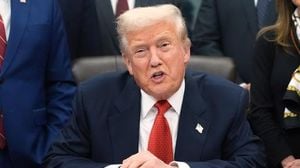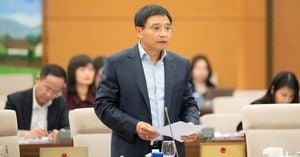The nearly six-week government shutdown that gripped the United States through the fall of 2025 has finally ended, but its political and social aftershocks continue to reverberate across the country. As lawmakers in Washington hammered out a last-minute deal to reopen the government on November 9, the nation was left to assess the costs—not just in dollars and disrupted services, but in political capital, public trust, and the shifting fortunes of both parties.
From the outset, the shutdown was a high-stakes standoff. Democrats, led by Senate Minority Leader Chuck Schumer and House Minority Leader Hakeem Jeffries, held firm for weeks, demanding the extension of expiring Affordable Care Act (ACA) subsidies and broader health coverage support. According to the Daily Caller News Foundation, this strategy was a calculated effort to draw attention to health care—a perennial issue in American politics—and to position Republicans as the architects of the crisis. Republican strategist Mike McKenna told the outlet, “This was a political thing. The Democrats wanted to draw attention to health care. They succeeded.”
But as the days dragged on, the pain spread far beyond the halls of Congress. The shutdown’s effects were felt most acutely by the nation’s most vulnerable. SNAP benefits, a lifeline for 42 million Americans, ran dry on November 1, leaving millions at risk of hunger. The Trump administration’s legal fight to avoid paying these benefits only deepened the crisis, as noted by Jared Bernstein in Econjared. Meanwhile, the FAA announced a dramatic reduction in air travel capacity on November 7, citing unpaid air traffic controllers and TSA agents. The result: thousands of flight delays and cancellations, with ripple effects across the economy and the daily lives of millions.
Federal workers bore the brunt of the shutdown. The Bipartisan Policy Center estimated that at least 670,000 employees were furloughed, while another 730,000 worked without pay. The Sacramento Bee highlighted the human cost: “These workers deserve full compensation for their service.” National parks closed, veterans’ benefits were threatened, and the airline industry was thrown into disarray. The shutdown, in short, was no abstract policy debate—it was a crisis with real, immediate consequences.
Amid the turmoil, the political landscape shifted. The November 4 elections saw Democrats notch key victories in Virginia, New Jersey, and New York City. In Virginia, Abigail Spanberger’s decisive win in the gubernatorial race was widely attributed to the shutdown’s impact on federal workers—a demographic with deep ties to the D.C. metro area. According to a CNN exit poll, more than six-in-10 voters from a household with a federal employee supported Spanberger. Kenneth Rapoza of the Coalition for a Prosperous America remarked, “I think the shutdown in Virginia probably helped her [Spanberger] win more than maybe some people expected.”
Polling data underscored the political fallout for Republicans. An NBC News poll released just before Election Day found that 52% of voters blamed President Donald Trump or congressional Republicans for the shutdown, while only 42% pointed the finger at Democrats. Veteran consultant Hank Sheinkopf told the Daily Caller News Foundation, “This was definitely about the shutdown, and if you look at the economic numbers they’re not good. It just was a wipeout, which shouldn’t have been.”
Still, the path to reopening the government was fraught with division—even within the Democratic Party. On November 9, five Senate Democrats broke ranks with Schumer after 14 consecutive votes to prolong the shutdown, joining Republicans to advance a deal. The final agreement did not include the health coverage subsidies Democrats had fought for, but it did promise a future Senate vote on the issue. Some progressives were furious at what they saw as a premature surrender. As the progressive opinion piece in Econjared put it, “If you were going to cave, why wait until day 40? With public opinion leaning your way, why let up?”
California Governor Gavin Newsom voiced similar frustration, lamenting that some of his Democratic colleagues in the Senate had “rolled over a little bit” just days after the party’s strong showing at the polls. In his view, Democrats risked squandering their hard-won momentum by returning to “the old set of rules.” The Sacramento Bee echoed this sentiment, arguing that while reopening the government was essential, Democrats must now move beyond shutdown brinkmanship and focus on delivering real solutions for the American people.
Others, however, defended the decision to end the shutdown. Bernstein argued that the Democrats’ unified stand had forced Republicans to “own the highly potent health-care (un)affordability issue,” even if the final deal fell short of progressive hopes. He noted, “The shutdown underscored that for Republicans, unaffordability and cruelty are spectator sports. This leaves Democrats as the only party in the game.” The risk, he warned, was that the political gains would prove fleeting if Democrats failed to build on the message of affordability and competent governance.
The deal itself, passed by the Senate on November 9 and the House on November 10, funded most government agencies through January 30 and extended budgets for agriculture, veterans, military construction, and Congress through September 30. While the agreement restored pay for federal workers and kept essential services running, it left unresolved the core disputes over health coverage subsidies and the future of programs like SNAP.
Political analysts agree that the shutdown’s legacy will linger into the 2026 midterms. McKenna observed that “having 40 days of the Republicans being a little tangled up and not being able to do stuff congressionally, that’s not a problem. That’s a good thing” for Democrats. Sheinkopf, too, sees the potential for continued Democratic momentum, “unless the economic conditions are resolved.”
Yet, as the dust settles, there is little appetite among voters for a repeat performance. The Sacramento Bee cautioned that both parties have abused the shutdown as a bargaining chip, to the detriment of the nation’s well-being. “Government exists to serve society,” the paper’s editorial argued. “Annual shutdowns caused by political brinkmanship are an abuse of that purpose.”
With the government back open and the next election cycle looming, the challenge for lawmakers is clear: move beyond crisis-driven politics and deliver on the promises made to the American people. The shutdown may have shifted the political winds, but lasting progress will require more than tactical victories and partisan point-scoring. Americans, weary from weeks of uncertainty, are looking for leadership that puts service above standoffs and solutions above slogans.




